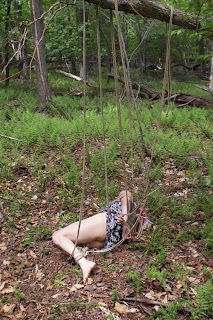When, in the 19th century, William James considered the question of how the world must look to a newborn infant he said it could only be "one great blooming, buzzing confusion." Thus could an infant have nothing like a world view, however rudimentarily formed - it was one of the very earliest arguments concerning what we now call the "nature verses nurture" debate. As
The Economist reports recently, one thing that appears
natural to newborns even less than a day old is the concept of number.
Discerning changes in the world is among our principle means of learning about it, and a key signal of change is numerical distinction. When an infant perceives the status of a thing changing from one to two, apparently a cascade of interesting mental functions are taking place, including rudimentary forms of addition and multiplication.
The experiments recounted in
The Economist have been going on for decades and have been replicated widely enough for researchers to now say with confidence that people are born with an innate sense of relatively how many items are in small collections. The basic experiment puts a card with one or two dots on it before the eyes of a newborn until she fixes her gaze on it. The card is then replaced with the dot or dots repositioned; their spacial relation changes, but the number is unchanged. Quickly the infant looses interest. When the card is numerically changed (one dot becomes two, two dots become three, etc.) her interest is rekindled. In some experiments it has been demonstrated that babies take note of the removal of one or more dots, which is the beginning of an understanding of negative numbers. This effect is just as reliable between senses, with groupings of three sounds becoming interesting upon loss of interest in two.
We humans are not unique in this way. There are animals that also perceive and understand small numbers. Ravens, for example, can be observed recognizing numerical signifiers to determine which container holds food, and chimpanzees are able to match numerically identical groupings of dissimilar items in anticipation of a food reward. While these effects are trained responses indicating ability, lions in the wild apparently can understand the numerical superiority or inferiority of their pride verses a maurauding group by counting the roars from a distance of the advancing pride. They will stand their ground or retreat based on this rudimentary calculation.
Such observation has led thinkers on the subject to postulate that the human brain is hardwired for numbers, with dedicated brain circuits that can work with small groups of things. From this basic ability to deal with one, two, then maybe one and two to make three, we have a base from which to elaborate a very complex but consistently testable tool for parsing the world and creating from James' "blooming, buzzing confusion" catagories and an orderly universe. As soon as we're able, we establish other bases upon which to perform increasingly complex arithmetic operations, such as base-10 (apparent by our fingers), base-20 (fingers and toes), bases -12, 24 and 60 (time functions, which have a richer factor set than base-10), and so forth. Known uses of positive integers predates an understanding of zero, which is numerically an abstraction (the absence of number).
As always, it's fair to ask of what interest this may be on a blog ostensibly dedicated to bondage and other of the BDSM arts. As I've noted before, binding and being bound are their own forms of signifier, and I've made cases for their utility in revisiting known precincts in experience and memory that have about them the noetic qualities of mystical consciousness. Being bound resembles nothing so much as the restriction of the womb, and in the womb, as I've noted, 1 is the only quantity intelligible to inchoate consciousness.
As noted in
The Economist article, the history of philosophy and anthropology is shot through with theories of how humans are induced to count. One of the oldest is the use of two arms. Even the word for a single number,
digit, is derivative of base-10 calculating as it refers to a finger (and, in meaning any single number designating any quantity, say, a single instance of the number 374,
digit is already a meta-signifier, a very complex mental leap). Some researchers, having observed that babies move easily to three from two (adding one) have assumed that innate brain circuits pattern after at least the number two based on an innate feeling for the presence of two arms, or two legs. The brain wires itself with respect to our bilateral symmetry and thus we emerge into the world with at least an arithmetic 2-base.
Returning to the womb I don't doubt that during our tenancy there our brains align by lobe and hemisphere and structure, which often enough are bifurcated across a medial line. But many important brain structures are limited to one occurrence, such as the structures that interface between discrete brain bodies, for instance the
corpus callosum. As far as bilateral symmetry is concerned, 1 is structurally and numerically just as important as 2.
Even if consciousness had the ability to "construct" (
a la Jean Piaget) the number two out of some dim perception of two arms or legs, there is no enframing device in which to perform any function to distinguish the number two from the number one. Furthermore there is no basis to believe that non- or pre-arithmetic abilities, such as a crude logic, endow us with the ability to predicate "and" of the womb situation. We do not see "this hand"
and "this hand" any more than a goose counts two "sides" to the sky while flying. Stereoptic vision, even unfocused, provides us with a unique singular vector along which depth is given to perception, thus furthering the case for perception in the womb being more of a fusion field than an environment where elements are intelligible as discrete.
It's clear that brand-newborns get the difference between numbers and that the structures of the brain align themselves bilaterally in gestation. What's also clear is that we have no basis for assuming that, just because babies can differentiate numbers within an hour of having been born, the same proclivity exists in them
a priori. The case for understanding number is divided across the birth event, for within the womb the number two is beyond "irrational", it's non-rational - it does not come up in consciousness.
The event precipitating babies' performing the big leap into numerical complexity is
birth. From the monad of the womb, the trip down the birth canal into bright light, cold air and near instant hunger is the bringing of, first, a simple logical predicate,
and (as in, this
and then this - before
and after - which is the touching down of an anchor into a linear concept of time, itself arithmetic). In a very short instant we are thrust from one state (and a state of oneness) into something completely different. Time
and number begin.

It has often been said to me by people - partners - whose experience I have witnessed and whose ability to speak of their feelings is liberal and intelligent, that being bound is to step out of time. A long stretch can pass, an entire afternoon of rigorous restraint, and it will be recounted to me as if a dream (or sometimes the timeless feeling is recounted as more real than the realm of time in which the feeling is being described). In any event, the moment of being loosened from bondage is often likened to the re-nascence of normal, conceptual time and space, something in which one touches down, in which one gets up and walks around, which one puzzles over and figures out.
Out of the womb and into the head.
Time and number are very useful for either navigating a world or constructing a world view, but they are also the crystallization of the many stones that will accrete to drag on us as we pass this life. The effects of time are additive, numerically and ontologically, while the number
one remains factorable by only itself; it is, in other words, ontologically self-referential -
monadic. Even with the onset of number, time, and the passing of life across various arithmetic bases by which we would detail its splendor, we always return to the idea and the feeling of
one -ness. As I have written here on
numerous occasions, the forgetting of differentiation is the impetus to intimacy and its very sweet function. The number one is what we know before 2 and 10 and 24 and primes and irrationals and all the other divisions become apparent, and this we never forget - because it's what we are.
I will further suggest that we have a suspicion about elaborated numbers in the same way we wonder whether the apparent world is not just a mask, "einer Welt vor der Welt", the
veil of Maya, as it were. We trust integrity, we suspect duplicity. We have formed mass social movements around peoples' innate trust of the principle of unity and called them
religions. We have formed tiny social movements around peoples' innate trust of the principle of unity and called it
love. The former, while motivated from exactly the same precondition as the latter, proceeds on the faulty assumption that the apparent is real, that the number
two is innate, and that thereby man can be ontologically distinguished from God. The latter proceeds from the logically and arithmetically tenable assumption that the number one is, despite the infinite calculability of the apparent world, still the primary and only ontologically meaningful factor.

















